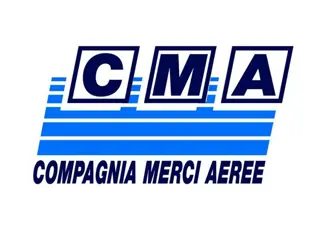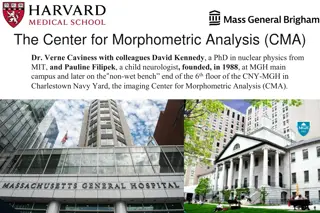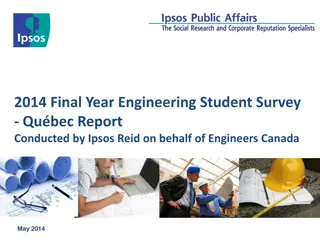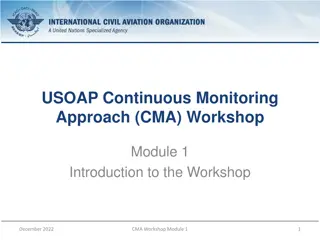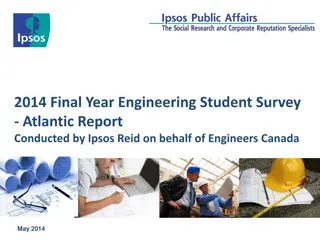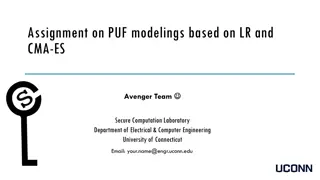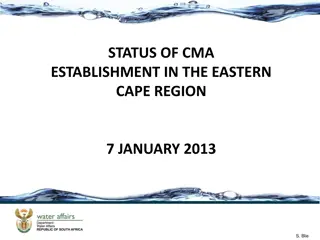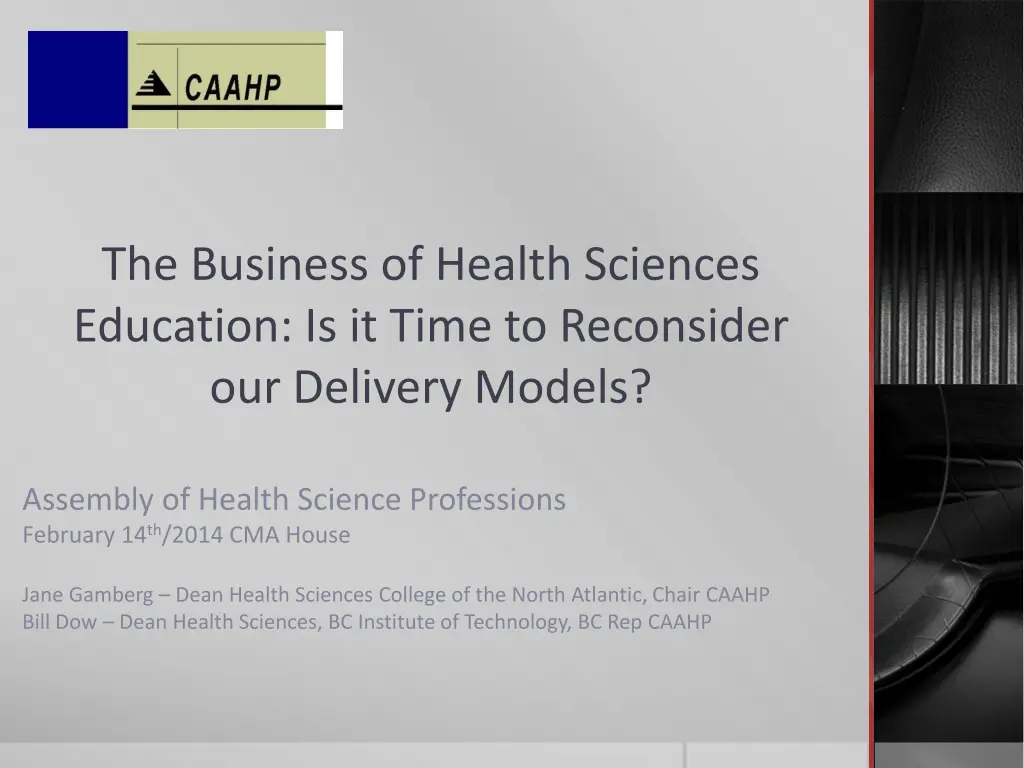
Reconsidering Health Sciences Education Delivery Models
Explore the discussion on reevaluating the delivery models of health sciences education by the Canadian Association of Allied Health Programs. Delve into the priorities and initiatives aimed at aligning programs with evolving healthcare needs for sustainability and growth.
Uploaded on | 2 Views
Download Presentation

Please find below an Image/Link to download the presentation.
The content on the website is provided AS IS for your information and personal use only. It may not be sold, licensed, or shared on other websites without obtaining consent from the author. If you encounter any issues during the download, it is possible that the publisher has removed the file from their server.
You are allowed to download the files provided on this website for personal or commercial use, subject to the condition that they are used lawfully. All files are the property of their respective owners.
The content on the website is provided AS IS for your information and personal use only. It may not be sold, licensed, or shared on other websites without obtaining consent from the author.
E N D
Presentation Transcript
The Business of Health Sciences Education: Is it Time to Reconsider our Delivery Models? Assembly of Health Science Professions February 14th/2014 CMA House Jane Gamberg Dean Health Sciences College of the North Atlantic, Chair CAAHP Bill Dow Dean Health Sciences, BC Institute of Technology, BC Rep CAAHP
Canadian Association of Allied Health Programs (CAAHP) CAAHP: An affiliation group for Colleges and Institutions across Canada offering programs of study in the allied health fields (ie, excluding Medicine and Nursing) Mission: To be the national voice for health sciences education Vision: To shape the future of health sciences education within the college and institute system
Canadian Association of Allied Health Programs The activities and affairs of CAAHP are conducted by a Board of Directors according to an approved set of bylaws. The Pan Canadian Board consists of eight members representing the following regions: British Columbia, Alberta, Saskatchewan, Manitoba, Ontario (2 members), Quebec, Atlantic provinces
Canadian Association of Allied Health Programs Membership The institutional membership of the association shall consist of publicly funded institutions offering Health Sciences Programs in post-secondary education. They shall be represented by the Dean, Director or equivalent. An organization agency or individual with an interest in the mission and purpose of the association may become affiliate members of the association.
Canadian Association of Allied Health Programs One face-to-face board meeting per year Annual Conference / AGM o Consistent attendance / Positive feedback Exploring ways of broadening CAAHPs impact to enhance the value of membership in the organization o 2012 facilitated strategic planning session
CAAHP Priorities Until a couple of years ago, primarily focussed on two areas: simulation and interprofessional education (IPE) Since then, shift towards broader issues, in particular on the changes that are occurring in health care and how to best align our programs to ensure sustainability and to maximize on the opportunities presented (recognizing that both simulation and IPE will play a role the process) 2014 CAAHP Conference AGM: oCAPITAL IDEAS / THINKINGTO ACTION: FORECASTING SYSTEM CHANGESAND THEIR IMPACTON ALLIED HEALTH PROGRAMS o May 28 and 29, 2014 at La Cite Collegiale, Ottawa
The Ten Pillars Shaping the Future of Health Science Education The Education & Training for Health Care Transformation Conference Jeffrey P Gold, MD Ten structural elements upon which the future of education in the health sciences will likely be built: Learner and Learning Focussed Sequential Competency Alignment Competency and Outcome Based Academic Health Center Based Interprofessional Emphasis Care / Safety Outcome Accountable Simulation and Virtual Pedagogy Diversity and Globally Focussed Team Based Performance Assessment Economic and Sustainably Deliverable
So What Else Will I Talk About? What are the prevalent trends in both Education and the Health system? What is necessary to pay attention to for programs to remain successful? Challenges in practice education and time for radical adjustments Rethinking the professional silos What can the AHSP do?
Future How Dare We! Anyone who tries to suggest anything definitive about the future should be thrown out However .. Lets be prepared to allow the uncertainty of the future as a means to provoke new thinking And If we look at current trends it would appear something is going to change!! So why not utilize someone who is constantly distilling trends and events in the education system. Ken Steele Eduvation Blog Sept 19/13 references 6 trends .I have 8
Ken Steele has 6 and I have 8 Trends Declining Youth Demographics Intensifying Urbanization Labor Market Swings Back Part Time Students Virtualization of the Campus Public pressure for Transferability The Health System will continue to struggle PSE funding models will increasingly be uncertain
Declining Youth Demographics Estimate some 400,000 less youth between 2013 and 2028 All the 18 year olds that can enroll in 2030 are now born Immigration will keep Vancouver, Toronto and Calgary on the growth side Deficit impact will be felt in other cities/areas of Canada Students will increasingly target their investment to specific skill development mostly because of government policy and messaging will change social norms. And labor market will push in this direction, ie you want a job you do x .
Intensifying Urbanization Suggested those education centers outside of the principle urban centers will experience declines in enrolments .outside defined as more than 2-3 hour drive New Canadians tend to locate in major urban centers ..hence the growth in those cities Limits with International recruitment- costly and competitive globally
Labor Market Pendulum Swings Back Stats Canada by 2030 approx. we will have a deficit of 4 million skilled workers Expect government and employers to shift toward creating mechanisms for faster access to the labor force, for example on-the-job training. Labor shortages create comfort with good enough ..credentials have less meaning. Quoting Don Wright former President of BCIT on the future of trends of the labor market will require modularized and just-in-time human capital development .
Part Time Students The reality is students are juggling many different responsibilities, for example the % of full-time students who are working has risen since 1977 from 22% to 50%. The % will continue to rise. Students are much more focused on co-op or work integrated learning opportunities especially where skill shortages exist. Technologies are providing alternatives shift is already happening
Virtualization of the Campus Data (BCIT and others) suggests students really like face to face education experience However as the skill shortage takes hold and rural access is required many more programs will be delivered on-line Technology is a catalyst not a solution but new skills required by Faculty to ensure high quality education Conversion to on-line is expensive!
Public Pressure for Transferability Access has to be as open as possible big push from government to reorganize the system Students sensitive to the investments made and will demand credit for not just courses but work experiences. Mechanism necessary for aggregating educational activities to attain credential and/or confirm competency
Health System will continue to struggle Health system pace of expenditure will cripple the treasury of each province. Issue is affordability! System redesign remains on the edges and more likely resembles tinkering than substantive change Expect continued experiments eg. New HR models, pay for performance Lacking of a strong national vision making progress on real change very difficult ; in-fact threatens to undermine the notion of a publically funded healthcare system (which may be the plan)
PSE Funding Models will be increasingly be uncertain Health care increase is PSE decrease governments have supported PSE development to increase access but are about to hit a funding wall. Several jurisdictions in Canada have implemented decreases in base/grant funding to PSE. Value for dollar spent is essential hence the emphasis on job skill development (easier to justify politically) and target funding. Competition for capital renos/buildings/equipment is harsh and will continue to be so Expect the rise of the private education providers faster, cheaper and supported by employers. Professional associations and regulators run the risk of being marginalized (by government) if not solution focused.
What can the AHSP do? Capitalize on collective voice eg. we need help with funding simulation Appreciate the notion of independent disciplines is difficult to sustainable It may not even make sense. Can we identify a process to support bold moves? Ensure the processes of accreditation and quality oversight do not inadvertently restrict innovation Keep the communication pathways short the world is changing quickly and important to maintain updates
Thank you and cheers to the Future! Jane Gamberg - Jane.Gamberg@cna.nl.ca Bill Dow - bill_dow@bcit.ca




